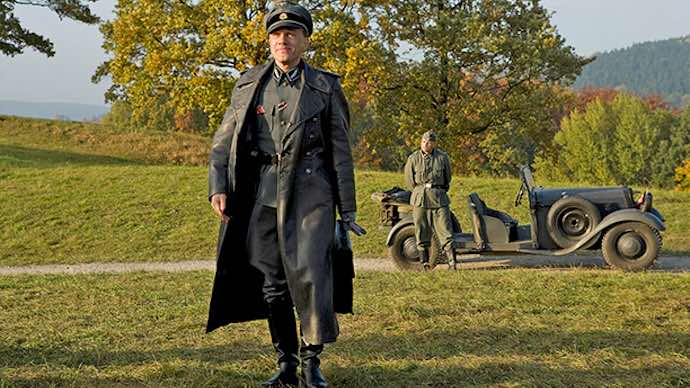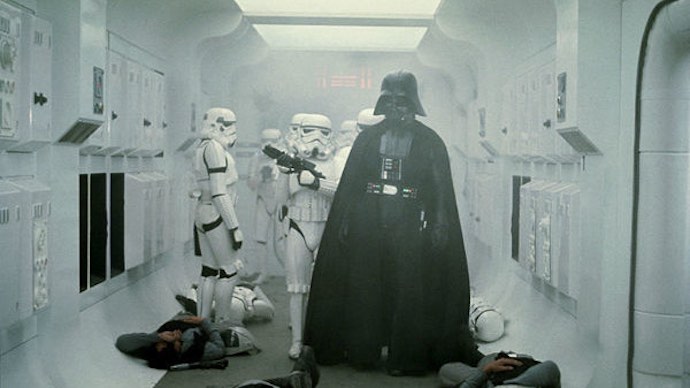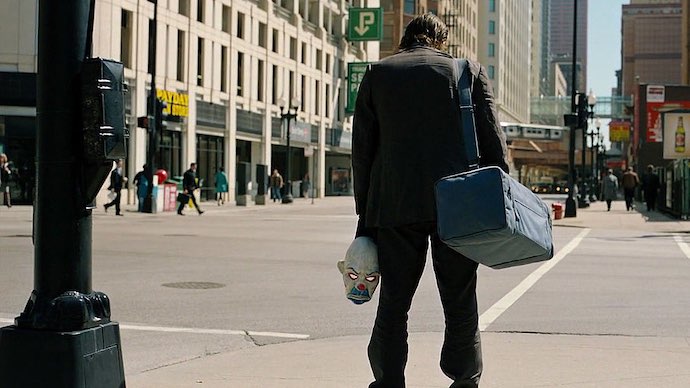It’s much harder than it sounds. Many villain introductions fail to make an adequate impact, resulting in the audience skeptical of the character’s ability to truly impede the protagonist. A poorly introduced villain can lose our attention and ruin the rest of the movie. On the other hand, a movie villain that’s introduced well can make us more interested in the villain than the protagonist. Sure, we might still root for the hero, but it makes us anticipate—often with bated breath—that climactic moment when the hero and villain finally clash. Here are our picks for the best movie villain introductions and what it is that makes each one so enduring in cinema history.
8. Keyser Söze (The Usual Suspects)
The introduction of Keyser Söze is a moment that lingers with us up until the end of The Usual Suspects—because the villain’s identity is the ultimate mystery of the film. When Verbal Kint is finally released from custody because the detective is positive that he’s not the man they’re looking for, we cut to Verbal Kint walking down the street. His limp fades away, his arms straighten out, and we realize—with the detective—that it was Kint all along. The introduction of the real Keyser Söze is a shocking moment, and just as we thought the film’s ending had already played out, we watch as Söze gets into his car and drives away.
7. Anton Chigurh (No Country for Old Men)
It’s rare to see a villain captured by the police in their opening scene, but Anton Chigurh isn’t your average villain. After he’s pulled over for a vehicle violation, Chigurh is taken to a local police station—where he proceeds to use his handcuffs to choke the police officer to death in a brutal fashion. As the officer struggles against Chigurh, the floor is marked by black streaks from his shoes as he desperately tries to escape. And that’s how the audience gets to know Anton Chigurh for the first time. The ruthless sociopath starts his journey through No Country for Old Men by killing a cop in a heinous manner and not even blinking an eye.
6. Saruman (The Lord of the Rings)
For those who hadn’t read The Lord of the Rings before they went to see the films in the theater, the twist of Saruman the White’s betrayal came as a huge shock in The Fellowship of the Ring. Gandalf attempts to get wise counsel from the powerful wizard, but he ends up being stabbed in the back by Saruman’s deceptive motivations—because he’s decided to align himself with the evil Sauron. As Gandalf attempts to escape, Saruman steps in the way and the pair engage in a brutal duel. Gandalf manages to open a door by throwing Saruman through it, but he quickly loses the fight from there. As a character introduction, the revelation of Saruman’s turn from good to evil provides a swift example of the monumental task that looms overhead for the forces of good in Middle-Earth.
5. Hannibal Lecter (The Silence of the Lambs)
It’s a risky move to introduce a character who appears far more dangerous than the actual killer that’s loose in the film—even when he’s presented as locked behind a glass prison cell. But that scene where Clarice Starling walks through the prison corridor to Hannibal’s cell is pure intensity. And when she comes face to face with the feared doctor, she engages in a mental battle with him. Hannibal Lecter has more in common with a creature born to hunt than he does a man. He rarely blinks and presents himself as a person with impeccable class, but underneath he’s a monster in human clothing.
4. The Thing (The Thing)
Upon repeat viewings of The Thing, you already know why the Norwegians are trying to kill a seemingly helpless dog. But the very first time you watch The Thing? It doesn’t make any sense. When the dog is put amongst the other dogs, they all shy away from it in fear—right before the creature begins to change form. The shaking and morphing of its indescribable shape keeps us gripped in pure horror. Now we know why the Norwegians were trying to kill the dog. Because it isn’t a dog at all. And this introduction is a striking sequence that stays with you for years afterwards.
3. Hans Landa (Inglourious Basterds)
Underneath Hans Landa’s cheerful and polite disposition lies a ruthless murderer who can sense when somebody is hiding from him. Nothing prepares the audience for that disarming charm in the opening scene as Landa appears satisfied with his findings, only to turn quickly and force the farmer to admit that he’s sheltering a Jewish family. The way Landa invites his officers to kill the family under the floorboards is chilling—because he retains his charm while ordering their execution. Due to Christoph Waltz’s unknown status in Western cinema at the release of Inglourious Basterds, he comes across as somebody who would meet his end with the farmer. That’s when we learn that Landa’s character is far too cunning for that to happen.
2. Darth Vader (Star Wars)
Here we have one of the most fearsome villains in cinema, and he’s still remembered many decades later. After a battle on board a rebel ship that kills several stormtroopers and rebels alike, the mists of laser fire still hang in the corridor as the ominous Darth Vader steps through the door. He’s a towering figure who looks at the bodies around him without sympathy. He’s unbothered by the lives lost. He simply walks through with a sense of purpose that only comes from being a Sith Lord. Moments later, he dangles a rebel by the throat while interrogating him. Darth Vader as a villain has defined sci-fi cinema for generations, and his introduction told us all we needed to know about his authority.
1. The Joker (The Dark Knight)
Christopher Nolan’s The Dark Knight began with a simple bank robbery. A group of hired thieves, all wearing clown masks, are discussing the man who hired them to do the job. As the job ensues, the men kill one another so they can receive a larger cut of the loot. However, that’s when one of the thieves begins to feel something off about the job—and he points his gun at the last remaining thief, thinking he’s been ordered to kill him. That’s when we hear the voice—the sound of Heath Ledger’s Joker—from behind the mask. Seconds later, the frightened thief is dead and The Joker reveals his face to the stricken bank manager for the first time. The moment is electric cinema. Ledger’s face dominates the screen with his clown makeup applied and his smile in full view. As character introductions go, it’s hard to think of a better one in cinema history. Read next: The greatest Joker scenes and moments in cinema



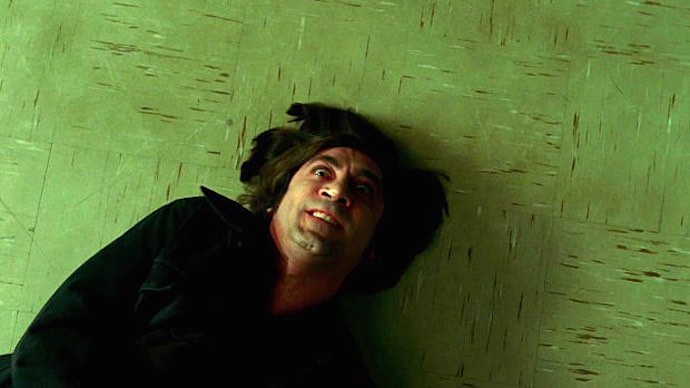
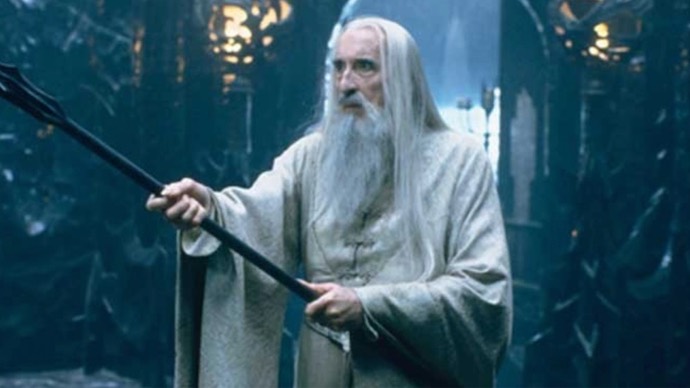

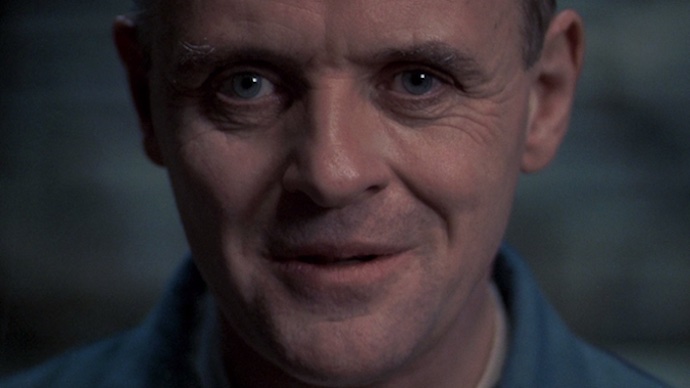

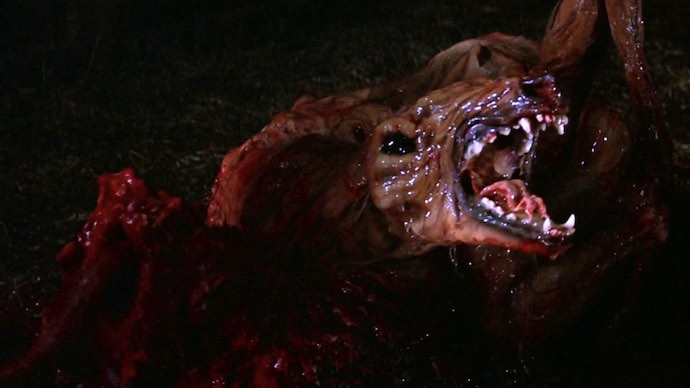
![]()
